Salon
Campaign ’12: The Stretch Run – Oct 10th Live Salon at Columbia University
Sponsored by Columbia University Graduate School of Journalism
BagNewsNotes and Columbia University Graduate School of Journalism present a live salon examining the photojournalistic coverage and visual framing of the presidential race. The discussion was held on Wednesday evening, October 10, 2012, at the Columbia School of Journalism. Introduced by panelist presentations, the program will follow the BagNewsSalon format of analyzing key news stories and media coverage through the discussion of a select edit of news photographs.
Images and Selected Quotes
Co-Produced by Michael Shaw and Nina Berman
(photo: Stephen Crowley for the New York Times. From the NYT Series, “Smoke Filled Rooms.” Installment 4:Along the Road to the White House. caption: Workers in Amherst, Ohio. The unemployment rate in Ohio, a key battleground state, improved over the year. (Photographed from President Obama’s motorcade.)
Michael Shaw: This photo is from the Stephen Crowley series, Smoke-Filled Rooms, which ran in The New York Times. I was talking to him on the phone and he said “Oh I’m really glad you picked that one.” So to start out with a question, because I think this is a special photo, what is special about this? Nina Berman: What struck me is that the guy on the left looks angry, suspicious of what he’s seeing, not welcoming. And then the guy on the right, well he’s excited because he’s gonna make a picture with his cell phone. But I found that in some ways a little sinister, the whole scene.
Stephen Crowley: It’s not a perfect picture, it’s not sharp, and that’s fine with me. But if you look, you’ll really see America out there, really struggling, frankly, and really struggling to have a voice. It’s tough out there and that’s not reflected in the average photo op, it’s not reflected in the average picture from Pete Souza that’s handed out from the White House. Alice Gabriner: In my 22 months there, I never was in a top communications meetings where anyone ever said “We want you to put out this or that kind of picture.” I never felt like I was being told to mold the image of the President in a certain way. And, you know, Pete Souza, who is a serious documentary photographer, is really there with his clear mission to document the presidency for history. It’s pretty interesting what Stephen put in the caption –The unemployment rate in battleground state Ohio improved over the year. Because that’s a key important point for the Obama administration. The Obama campaign would love this photo.
Nina Berman: This photo reminded me of something I might see from early Reagan campaign, when we cared about workers in Ohio, when they were actually a big part of the news, the Reagan Democrats, the idea that the blue collar worker would go Republican. And now, it’s just like looking at this photo I feel as though these people have just gotten poorer. I saw it as really pretty sad and pathetic in a way, and very unusual.
Michael Shaw: I think one of the legacies and impact of the Occupy movement is that it created a new standard for populism and honesty and questions about representation and income and class division. And to the extent that we hear a lot of sound bites about that and a lot of lip service paid to that, you look at this picture and there it is and in a way it kind of demands an accounting, a photo like this. And also in terms of the emotion of it. It’s sad. And Nina mentioned anger, and I think they’re both in there, it starts to pull out these kinds of feelings that we all have, this frustration that we all have, that’s not really getting addressed or heard or tapped into, and I think the photo does an amazing job tapping right into that.
(photo: Jim Watson/AFP/GettyImages caption: US President Barack Obama (C) toast with a bar patron at Ziggy’s Pub and Restaurant Amherst, Ohio, July 5, 2012, during an unannounced visit while on a bus tour of Ohio and Pennslyvania.)
Michael Shaw: I chose this photo to discuss because Obama got taken to town by Hillary Clinton in the Russ Belt in 2008 because she’s out there drinking beer and whiskey, and Obama was like “I’m on Newsweek with the arugula cover and I’m getting killed here.” So he’s done one beer and pub photo op after another after another. We’ve we stopped collecting all the images, but this picture is really interesting because there’s a kind of ambiguity about it.
Marita Sturken: Well you know obviously we do read that code of him being able to participate in ordinary guy stuff — it’s about workers, it’s about class. The lighting is a bit off so Obama and the guy he’s drinking with actually look like they have the same skin color, which is interesting. You know, they’re both a little pink. You know Obama doesn’t look like he’s having a very good time though. So the question is really like, “Ok we get the code, we’ve seen it a gazillion times, so is this image presenting it straight or is it playing with it a little bit?”
Nina Berman: And then the flash is a little overexposed and kind of direct and ugly. But you know, normally when you click glasses with someone you look at them, right? It’s an attempt to make a connection but there’s something lacking so they connect through this ritual but they don’t really want to look at each other.
Stephen Crowley: Actually we were pre-positioned, I was there. There were four photographers pre-positioned and one TV camera, the pool camera, and that’s the TV camera’s light which evened it up. Those are two secret service agents on either side of them and Obama came in, we were there, that guy turns on the lights and now there’s enough light to make the shot.
Alice Gabriner: The man in the middle is Marty Nesbitt who is the President’s best friend. And they just – to me he just looks kind of exhausted. It’s just kind of, how many of these have they done.Michael Shaw: I think he looks like he’s not into it, but I’m wondering if, well you were there – I’m wondering if he was trying too hard like he’s trying to really look into it, like “I’m really down with this guy!”
Alice Gabriner: The media landscape has changed drastically as we all know. We’ve heard a lot about being oversaturated with images. So images like this, maybe there was an age where there was only a few places where you could go and see campaign photography. Now it’s all over the place so perhaps the quality of editing is not great. Who’s editing these pictures? Maybe there aren’t editors? I don’t know the answer to that but I would wonder when we see these pervasive images whether curation, the skill of curation, is disappearing.
Marita Sturken: I think there’s a bigger issue in just this kind of image, the way in which this idea that presidential candidates have to constantly enact some kind of ordinariness when clearly they are not ordinary people. And especially the President of the United States is not, right? But the way in which they themselves perform and produce these images that are about their relationship with workers, regardless of what their policies might be. Like the image of Reagan clearing the ranch right? Because that was sort of the original moment of this idea, of somebody like Reagan — not your average guy right? — doing something that made him look like a man of the people. And it’s amazing how powerful this narrative remains.
(photo: Scott Olson/Getty Images. caption: Republican presidential candidate, former Massachusetts Gov. Mitt Romney speaks to members of the Detroit Economic Club during a luncheon at Ford Field on February 24, 2012 in Detroit, Michigan. Michigan and Arizona residents will go to the polls on February 28 to vote for their choice for the Republican presidential nominee.)
Marita Sturken: This image is about showing us behind the scenes, the apparatus, the empty seats, the photographers in the back of the room. And we are used to that. We are used to the photographers stepping back and giving us that broader context.
Nina Berman: Right, this is probably not an image that Romney people when they were staging this event thought photographers were doing to make. And the photographer got a lot of flak from the campaign about the empty space. But reporters started tweeting similar images. Romney’s in this big stadium? And the pictures look like it’s filled but actually it’s just a little sliver kind of the place, sort of like Times Square on New Year’s Eve. They show a tiny crowd and you get a sense that there’s zillions of people but it’s just like this very narrow view.
Marita Sturken: The other thing we really see is the barrier between him and them. You know, they’re in a cage, right? He’s being protected from them almost.
Michael Shaw: It seems almost with the light coming in from above it has kind of a hallowed quality. And I don’t know what that banner is, I think it’s actually a Pepsi sign, but I keep seeing the Madonna every time I look at that for some reason. And then it just seems like that raises the cynicism even more.
(photo: Spencer Platt/Getty Images. caption: A woman sweeps the floor before the start of the second day of the Republican National Convention at the Tampa Bay Times Forum on August 28, 2012 in Tampa, Florida. Today is the first full session of the RNC after the start was delayed due to Tropical Storm Isaac.)
Michael Shaw: This was taken at the Republican convention by Spencer Platt.
Nina Berman: It’s a pretty harsh picture, you know? Kind of poking a hole in this whole “We built it” thing. Who’s actually building what? And who is cleaning up after us? I thought it was a fairly opinionated picture.
Michael Shaw: I think it’s a picture that, in a way, is screaming out. You know, the GOP is talking about two Americas, but they’re really not talking about class, they’re not talking about race. So – here it is, right in your face. I think there’s an orneriness out there that you are seeing in the imagery and I think it’s called for. People know the difference, in terms of artifice and when it’s getting really stage-y and there’s less tolerance for it.
Nina Berman: But also in this picture, it’s really striking that there’s no one in the seats. I mean, imagine this picture if the seats were filled. It would have a whole different sense to it. I mean, it’s kind of like – we built it but we’re not going to show up to talk about it. In a way, there’s something I find powerful in the emptiness, that there’s no one there. I’m not quite sure how to read it but I feel it when I see it, like it makes it more powerful in a sense.
(photo: Ben Lowy for The New Yorker. Instagram. Republican National Convention. September 2012. caption: Tampa, FL | August 30, 2012 RNC delegates recite the Pledge of Allegiance on the final night of the 2012 Republican National Convention.)
Michael Shaw: One theme going through the campaign this year is the whole issue of distribution and going direct to consumer via Twitter and Instagram. So this photo was taken directly by Ben Lowey for the New Yorker. He was the New Yorker Instagram correspondent at the Republican convention. I think he’s just going for the juggernaut with this photo, wouldn’t you say?
Nina Berman: Lowey could have chosen any people from the crowd to make this picture and he chose these men. He’s telegraphing something with this choice, right? The post-processing in it, ok it’s slightly green, you know it’s a little like higher contrast, so that’s in the app. But it’s not like super, super heavy, it’s more the gesture of the hands. The guy in the front looks kinda the most mean or most angry. Then you’ve got the guy on the right and he’s a little skeptical or something. And then the guy in the back who looks the most well put together in a sense in terms of his hairstyle, all of that. I mean he seems to be definitely of a certain class.
Michael Shaw: When I look at this photo, I’m thinking that the Republicans put on a convention where the people they had speaking were – it was like a rainbow convention — a lot of women, Latino women, African-Americans. And it just didn’t ring true at all. It’s subjective, but my sense that what Lowey is doing here is saying, “hey you know the Tea Party didn’t disappear- they were there and who’s gonna show them? Well I’ll show them. And they are they’re pissed.” This year they have photographers that are doing more mainstream type imagery and then the rest of time they’re shooting stuff that’s both quirkier. And then there’s a lot of imagery too that they’re shooting that’s pretty cynical. You know, it’s showing the wait staff coming in now to these private dinners or it’s poking fun at some guy’s gated community in Hillsborough. Instagram and Twitter are a bigger channel right now of distribution. So you are getting pictures, and maybe it’s because people are – like you were saying, not buying it – so now we’re getting, truthier pictures.
Stephen Crowley: I email my photos to myself and then put them into Instagram. The truth of it is – you’re close to the candidate but you’re really pretty far away almost as far away as everybody else. I mean you see a little bit more but there’s not a whole lot to “get.” The candidate is always 15 cars ahead of you and you’re running to get up there and by the time you got he’s already in the tent, in the back door and Pete Souza’s making beautiful pictures and you’re being hustled into the buffer again. You know, so you start looking for things and you pick up little strands of information as you go along. By the time you get into the buffer zone, it looks like there’s a thousand hands up like this, everybody in the audience is already tweeting photos. So all we have left is access, and hopefully we’re trying to tell a story and trying to interpret what we’re seeing. Doesn’t matter how many people are tweeting it, you’re interpreting.
(photo: Doug Mills/The New York Times. caption: An exuberant Scott Van Duzer greeted President Obama when he stopped by Mr. Van Duzer’s pizza shop in Fort Pierce, Fla., on Sunday.)
Michael Shaw: I would say this photo is probably the most viewed, the most recognizable photo of the campaign this year. This is the day after a pretty successful democratic convention and Obama is in this pizza place and this guy is a Republican, Scott Van Duzer. This is a very staged photo because he went to the Secret Service, and asked if he could give him a hug. And everyone said yeah that’s great and Obama said yeah and Van Duzer lifts him up. It’s like, he got a big lift out of this convention and reaching across the aisle. I think it’s quite exuberant it’s really interesting how things changes so quickly after the – given the debate.
Alice Gabriner: In 2008 there was behind the scenes photography from Time andNewsweek. I was working at Time magazine then and I was overseeing the department and working with Callie Shell. One of the changes now is that thatTime and Newsweek don’t have the budgets to cover candidates and build that kind of access. Callie Shell started covering Obama in 2006 so it was two years of covering him, the first time she went out with him it was Callie Shell and Senator Obama in a car. And at the end of this long run he said Callie you know you’ve been here from the beginning so there’s that kind of trust and relationship. Access is trust, access is power. And I think one of the things that happens is they feel like they can’t win. The press is going to see the agenda that they want to see. So the White House is going to start to worry about how pictures are going to be framed. And it’s so important as we saw from the debate two weeks ago. Image is so important. He could win or lose this election based on image. So they want to have somebody like Pete Souza, when Time and Newsweek and their access started to dissipate they said, “Lets just do it ourselves.” These pictures exist in other presidential archives from Lyndon Johnson on — there’s behind-the-scenes photography with presidential photographers documenting the presidency. This administration just said – let it out. In 1996, when I was at US News and World Report, I went to the Clinton White House to do a year-end edit, we would do these Pictures of the Year things. And I went through these archives, a lot of these negatives, picked a picture that I still remember of Hillary sleeping with Chelsea in a bed in Air Force One. It was a beautiful picture, very intimate. And it made the selection of pictures – but not one of them were approved. From the White House vantage point it was, “We want to make them look presidential.” Obama kind of got the sense that if we show who he is that is a good thing.
Stephen Crowley: I would argue it would be a better thing if the press were allow to show that. We wouldn’t have accepted photos from a Flickr feed from Richard Nixon during Watergate. I have nothing but respect for Pete Souza. He’s a friend of many years, colleague, he worked at the Chicago tribune before he went to the White House and we used to sit and complain about the same things in the briefing room. And he’s a wonderful photographer, an honest, wonderful man. But still, that’s the issue. You’re right, the media can’t afford extensive coverage…it costs 2,000 a day for me to go out with a candidate. That’s the average. We pay for everything. Well, most news organizations can’t afford it now, we can’t really afford it. So now you’re resorting to using picture from the Flickr feed. And there’s nothing wrong with that. …
(photo: Charles Dharapak/AP. caption: Republican presidential candidate and former Massachusetts Gov. Mitt Romney and wife Ann arrive at il Casale restaurant to have dinner in Belmont, Mass., Saturday, Sept. 15, 2012.)
Michael Shaw: Well, the reason I chose this picture is I’m in love with Charles Dharapak right now. But really, it’s because the most interesting aspect of this campaign to me this year is that Romney is an enigma. There’s something so enigmatic or guarded or – there’s a lot written about it. So this is a photo of Mitt and Ann. And they are on their way out to dinner, just the two of them. I think it’s fascinating. He looks heavier than I usually see him and she looks a little frumpier than I think you usually see her. Um, I’m actually curious to hear how people react to this.
Nina Berman: Where was their iron? You know, you just never see a candidate and his wife like their clothes so wrinkled. It’s just not done, especially Romney.
Nina Berman: Why do we continue as press, covering this stuff. We consistently go on the plane. We consistently go on the motorcade. Why can’t we cover the issues instead of the man? And then we have this call to personality. We have to talk about if his shirt is wrinkled or not, because it’s all about the guy, right? But if he becomes President, he’s part of a whole staff, a whole system right? It’s not just about what Romney does or what Obama does, I mean it’s all the people and the ideologies and the interests and the agendas behind them. Can’t we find a more creative way to cover that? What kind of a campaign do we want to see and how do we want that covered?
Michael Shaw: I just have to come back and say one thing — with Obama I think that there’s a very high degree of genuineness, and I think that there’s also a very high degree of manipulation and staging and self-consciousness at the same time. Unconscious – un self consciousness –and an amazing amount of calculation. And why is that? Because some of his demographic, because, at his age, he’s grown up in this culture that’s so sophisticated in terms of visuals, and media, and just like all of us are so much more sophisticated about that. At the same time, when you live with a photographer and you have someone like Callie Shell there, it’s like yes you’re completely natural, but you also know that you’re running for President of the United States and you have to present. So in some way what the Presidency has turned into for me is like The Truman Show. It’s like, you can’t tell the difference between what’s natural and what’s candid because everything is – in the whole way that Obama’s portrayed, — is candid. But then how much of that is also self-conscious? I think it’s both. It’s weird. It’s complicated.
The Full Edit
Take a closer look at some of the images from our larger photo edit.
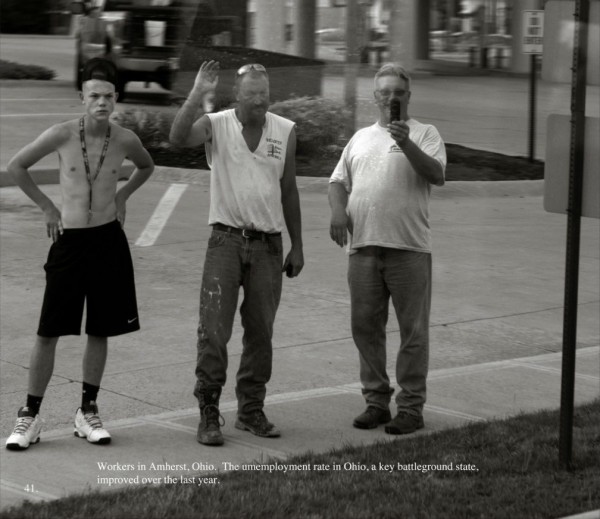
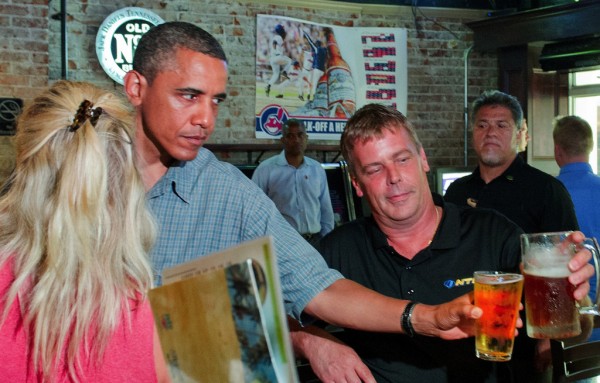
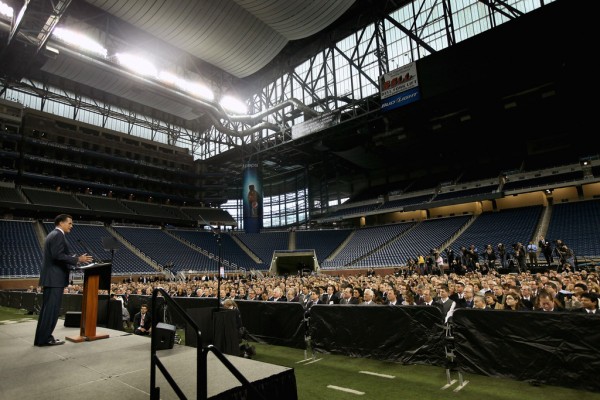
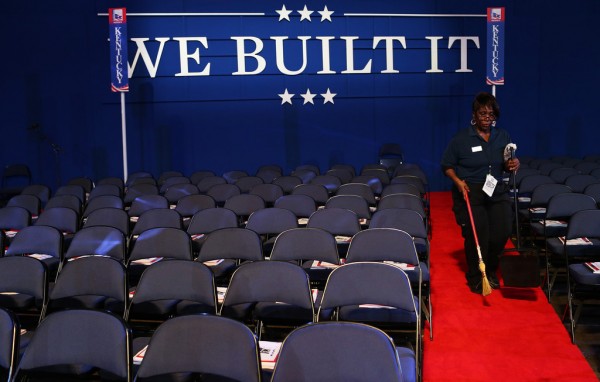
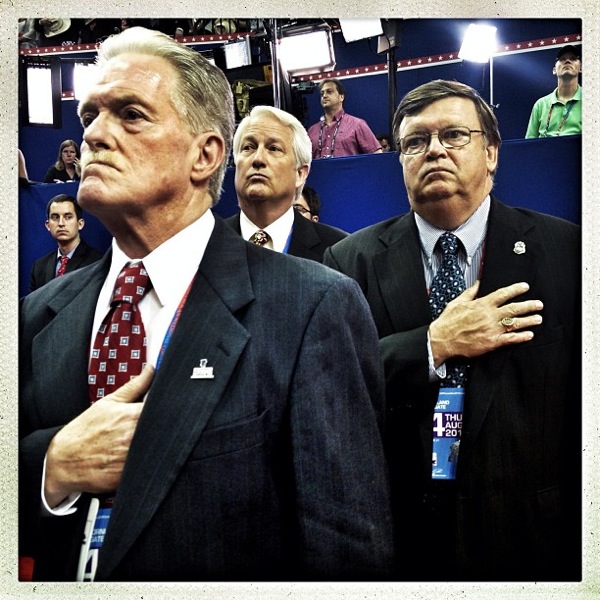
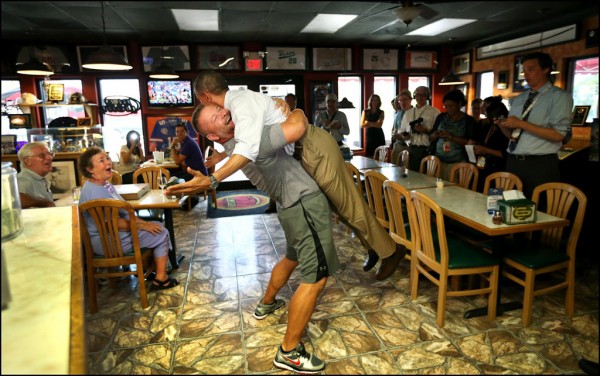
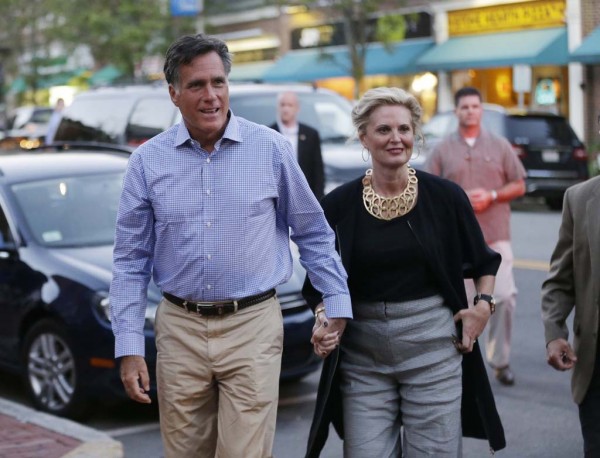






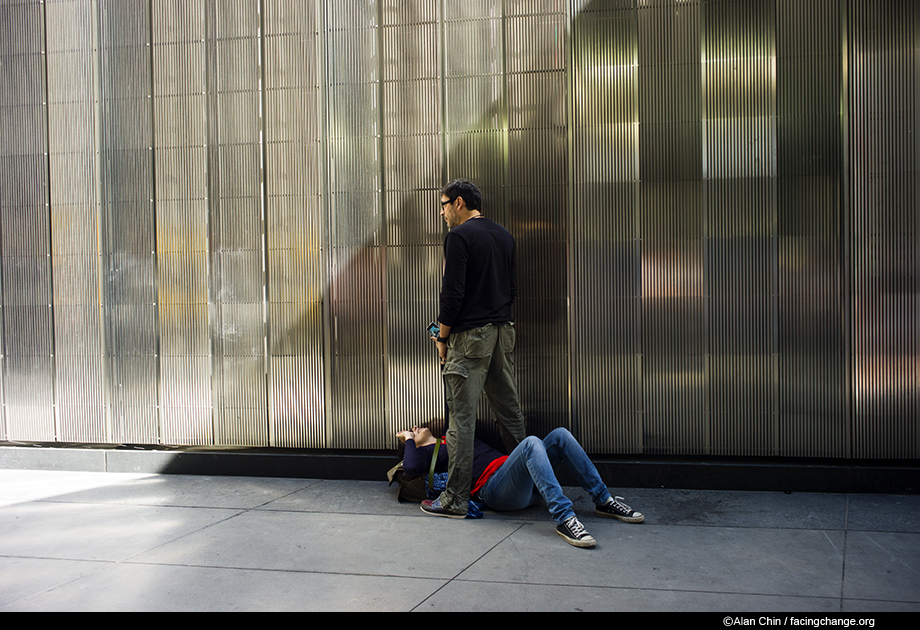
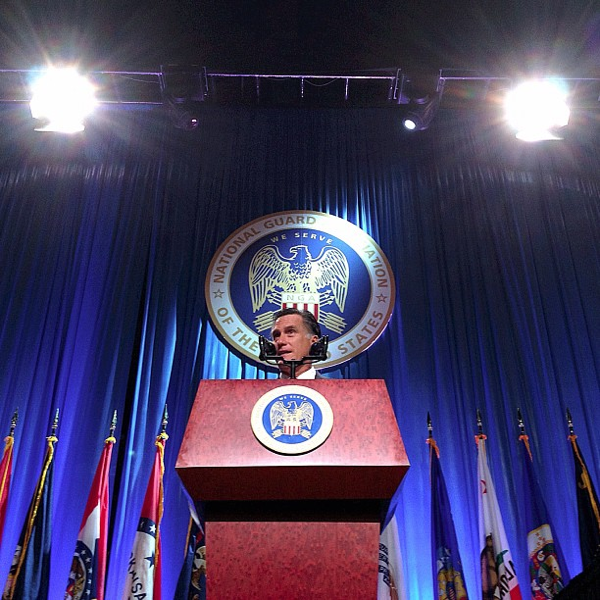
Reactions